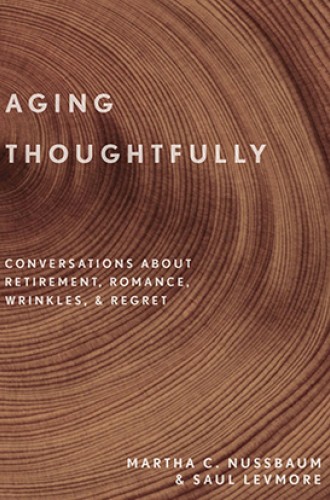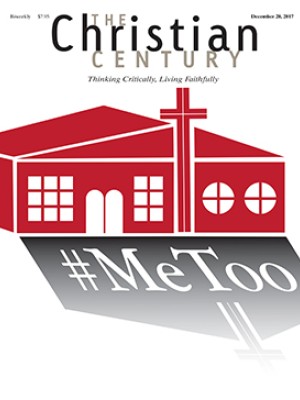Two old friends have a lively conversation about getting old
Martha Nussbaum and Saul Levmore draw from philosophy, literature, economics, and public policy to ruminate on aging.
The current advertising landscape proves that wrinkle-free skin is no longer a requirement for selling fashion: Iris Apfel (in her nineties) and Joan Didion (in her eighties) play prominent roles in recent fashion ad campaigns.
This disruption of youth-centered norms in fashion occurs as more than 70 million baby boomers are transitioning into older adulthood. Health-care providers are also rethinking how they address aging. Geriatrician Louise Aronson persuasively argued in the New York Times (August 13) that, although human diversity peaks in older age, medicine poorly distinguishes between the “young old” and “old old,” two groups that differ both physiologically and functionally.
A call to recognize older adult diversity—in health as well as in many other spheres of life—permeates Aging Thoughtfully. Martha C. Nussbaum and Saul Levmore, both of whom teach at the University of Chicago Law School, explore aging using a conversational format inspired by Cicero’s De Senectute. Nussbaum writes as a political philosopher, Levmore as a lawyer and economist. In their addresses to each other, they use philosophy, literature, economics, and policy to ruminate on aging, canvassing themes ranging from retirement and romance to friendship and philanthropy.
Read our latest issue or browse back issues.
Nussbaum draws upon her impressive depth and breadth of multidisciplinary knowledge to make key arguments. First, she says, generalizing about aging is “fraught with peril.” Second, and consequently, political principles and policies should recognize the diversity of experience in older adulthood, combat damaging stereotypes, and support and protect the agency of older people as “choosers and makers” of their lives. She contextualizes issues in aging using her influential human-capabilities approach (which is developed clearly in her earlier work, Creating Capabilities). This approach outlines core political entitlements based on human dignity and equality that are not tied to economic productivity.
At times, each author strays from addressing the other’s points, focusing instead on how their own core interests fit the topic under discussion. It isn’t quite accurate to view the chapters’ essays as opposing views, but the two authors bring distinct perspectives that make it easy for a reader to enter the discourse.
Nussbaum and Levmore disagree most vehemently in their chapter “Looking Back.” Nussbaum begins with a pithy yet masterful exploration of how older adults in Western antiquity disregarded retrospection as a means to make sense of their present and future. She proposes that a modern preoccupation with backward-looking emotions emerged as Jewish and Christian emphases on regret and guilt and were entrenched in the Western psyche through the advent of psychoanalytic thought and the influence of the novel and theater. She creatively pieces together her argument for the latter through examples from playwright Eugene O’Neill, nouveau roman author Michel Butor, and the bildungsroman genre.
After illustrating how excessive self-retrospection can hinder personal growth, Nussbaum concludes that meaningful aging requires retrospection in moderation.
She then pivots and argues that life in many retirement communities is structured to prevent the necessary level of retrospection with community life focused on being in the present moment (“presentism”), avoiding larger societal problems, and limiting when children (and their attendant disruptions) are welcome to visit. In essence, these community members are distracted.
In reply, Levmore adopts a live-and-let-live attitude. He states simply that senior citizens “want physical and mental comfort food” and the market tells us that they want “presentism,” which he sees as “happy people who know how to seize moments.”
In the introduction, the authors stipulate that “these sixteen essays are meant to provoke rather than exhaust discussion of how we might all age thoughtfully.” As I encountered arguments and counterarguments that aren’t fully developed, I kept reminding myself that each essay was a letter, not a treatise. I would have liked more discussion on the future of aging and inequality and less on the ways to dispense one’s estate. I was also struck by the absence of discussions about one’s moral legacy (not just philanthropic, which is adequately covered) and how one might reflect on the state of the world that will be left behind upon death.
Nevertheless, Nussbaum and Levmore provide important points for combating ageism while honoring the many changes that accompany aging. Aging Thoughtfully promises to provoke thoughtful discussion, especially among those at the cusp of older adulthood.







